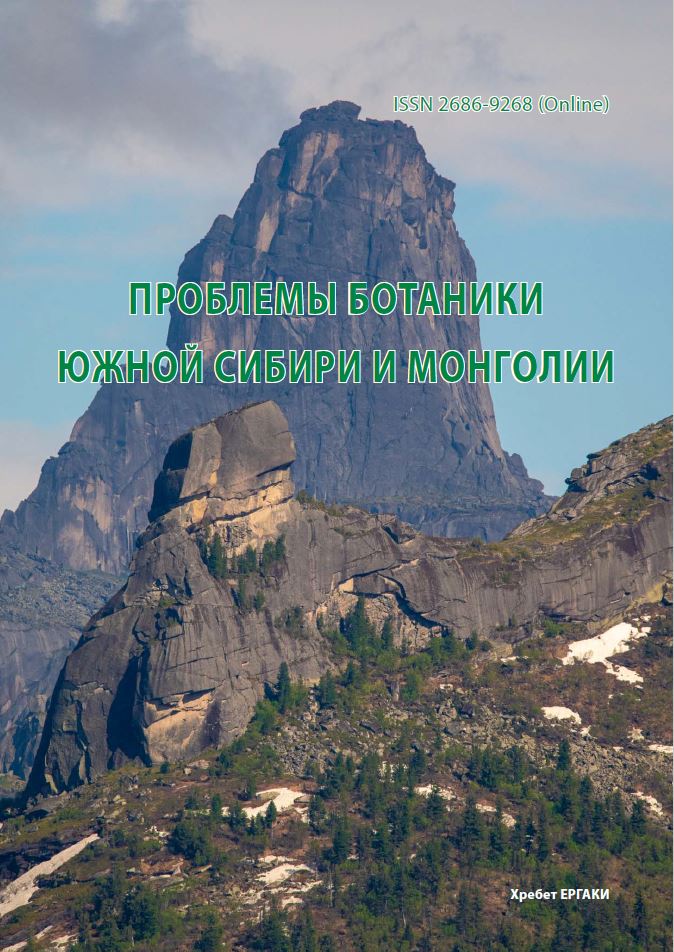Cat’s foot plant (Antennaria dioica) as an indicator of favorable geoactive zones
УДК 58.009:551.24.05:712.4(470.53)
Abstract
The search for plants that can be indicators of geoactive zones has continued. A 180-year-old cowberry pine forest was investigated on the territory of 30 hectares, where there was a grass-roots fire 15 years ago, in the forests of Perm around a locus N58°0'48.05", E55°53'4.46". The methodology of the work included mapping of synusias of the cat’s foot dioica (Antennaria dioica (L.) Gaertn.). Centers of favorable geoactive zones of six types with sizes from 1 to 55 m, as well as pathogenic zones of Hartman and Kurri were found and mapped near them. 12 sinusias were detected, while the three largest were double and were located in two zones of 3 m in size at once. All the sinusias were located in the comfort zone of the 3 m zone, so the cat’s paw can serve as a good phyto-indicator for zones of this type. In addition, all of them were also located in the zone of action of the «senior» zones with dimensions of 8, 16, 32 and 55 m. These zones can be arranged linearly (URL: https://youtu.be/bCep8MCe4M8) and arrange a triangle and even a cross (URL: https://youtu.be/ rr_jDVzOgbk). The results of the work confirm the hypothesis of the action of «subtle» energies of the Earth through these zones with a frequency of thousands and millions of hertz, which probably coincide with the radiations of plant biofields that form similar phenomena on them. There are no devices with such characteristics yet, so you can start studying the physical properties of the soil (electric potentials, magnetic fields, soil heating on sunny days) at the points of the Earth’s energy output. They will be pointed out to us by trees and some perennial plants, including cat’s foot, and in the future other plants of the ground cover.
Downloads
Metrics
References
Горелов А. М. Миколайко В. П., Красноштан И. В. Введение в эниодендрологию. - Киев: ФЛП Ямчин-ский А. В., 2020. - 138 с.
Гульельми А. В. Ультранизкочастотные электромагнитные волны в коре и в магнитосфере Земли // Успехи физических наук, 2007. - Т. 177. - № 12. - С. 1257-1276.
Михалев В. В., Рыбальченко А. Я. Флюидизатно-эксплозивные структуры заповедника «Вишерский» и их влияние на растительные сообщества // Геология и полезные ископаемые Западного Урала. - Пермь: ПГНИУ 2021. - Вып. 4(41). - С. 11-23. URL: psu.rmfiles...geologiya-i...iskopaemye...urala-2021.pdf
Рогозин М. В. Гипотеза «тонких» энергий геоактивных зон: штрихи к портрету нового направления исследований // Аэрокосмические методы в геологии. - Пермь: ПГНИУ, 2021. - Вып. 3. - С. 116-133.
Рогозин М. В., Михалев В. В. Высшие растения - фитоиндикаторы геоактивных зон в горах и на равнине // Проблемы ботаники Южной Сибири и Монголии, 2021. - Т. 20. - № 1. - С. З73-378. DOI: 10.14258/pbssm.2021075
Рогозин М. В., Михалев В. В., Рыбальченко А. Я. Лесные экосистемы и факторы неотектоники. - Пермь: ПГНИУ, 2020. - 249 с.
Рыжие лесные муравь и какие энергии Земли они любят. URL: youtu.be/rr_jDVzOgbk
Поздняков А. И. Полевая электрофизика почв. - М.: МАИК Наука / Интерпериодика, 2001. - 187 с.
Уникальные случаи воздействия геоактивных зон на биоту. URL: youtu.be/bCep8MCe4M8



